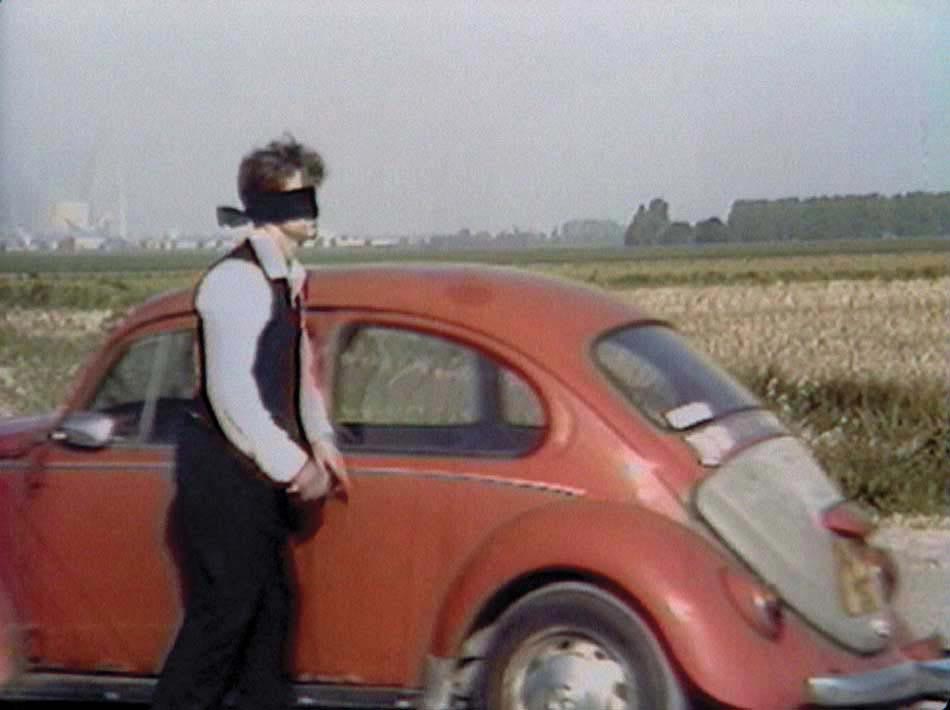intuitive knowledge and imaginary logic

Ants carry confetti to the nest. At first glance, I think it's a funny little movie and it looks like a jolly affair, as if the little creatures preparing a party. But actually what should ants do with confetti?
The title quarta-feira de cinzas refers to Ash Wednesday, the melancholy period following Carnival and the beginning of fasting.
The video also embodies a multitude of references to Brazilian culture. The ants refer to the shapeshifting anti-hero Macunaíma in Mário de Andrade's 1928 novel of the same title. The book marks the beginning of the Brazilian modernist movement. In the story, Macunaíma is transformed into an ant by a magical spell, and he learns the value of hard work and cooperation while living among the ants.
Additionally, the ant is a recurring symbol throughout the novel, representing the collective consciousness and identity of the Brazilian people. The ant's tireless labor and unwavering loyalty to the colony mirrors the struggles and sacrifices of the Brazilian people in their fight for independence and identity.
It is not so hard for me to imagine insects in electronic components. They already have legs and there is such a variety of shapes in components that you can solder anything together into a creature. Humans could see figures in abstract things, like clouds, trees and stains. Humans have the tendency to even emphasize with them and make them meaningful. This perception is called pareidolia.
I also stumbled upon creatures that not exist. Hybrids; human-machine or human-animal. By designing hybrids humans blur the lines between themselves and the other creatures. Using hybrids is a way we could explore our relationship with the natural world.
In this movie made by Floris Kaayk human industrial waste becomes a breeding ground for new creatures.
Where does this bias to emphasize with things and fascination for hybrids come from? Click the button below.
CIRCLE, CIRCLE, CIRCLECIRCLE, CIRCLE,
CIRCLE,CIRCLE,
CIRCLE,CIRCLE,
CIRCLE, CIRCLE, CIRCLE,
CIRCLE, CIRCLE, CIRCLE,
CIRCLE, CIRCLE, CIRCLE, CIRCLE,CIRCL
OBSTACLE, OBSTACLE,
Here is a reference to Samuell Becket's play "Happy Days," in which in Winnie holds a monologue. Winnie, is buried up to her waist in a grass-covered hill. She has only her hands available. Nearby is her black bag; she rummages in it. It contains a revolver. Despite her situation, she repeats how happy she is. She keeps talking. At one point, she sees an ant walking. ' Hey, what's this here? It looks like something alive' (Finds her glasses puts them on and bends deeper.) 'An ant!' (recedes, shrill) 'Willie, an ant, a living ant! (grabs a magnifying glass and bends back to the ground and through the magnifying glass) Where is he now? (looks) Ha! there he is (follows his way through the grass) He has a little white ball in his arms( follows his way, hand still, pause) He has crawled in. (keeps staring at the spot through the magnifying glass for a moment, then slowly straightens up, puts magnifying glass down, takes off glasses and stares ahead, holding glasses) just a little white ball. ....[...]
Scroll to 22:02 it ends at 22:47.
Samuel Beckett is an absurdist. He demonstrates the irrationality of existence in a way that does not create the illusion of coherence.
home
40-44-PG, 1993
35mm film, color, sound, 3 min 1 sec (originally with a tube camera on U-matic low band)
Edition of 6 + 1 AP
The performance, recorded on film, was repeated one year later during the AVE festival as an illegal action in the city center of Arnhem.
The car drove around in circles with no driver in it. The wheel was tied with a rope and there was a brick on the pedal. I walked around blindfolded, trying to dodge the car and trying not to get run over. It was a teenage game I used to do with my twinbrother Bart. I decided to reenact this pastime or rite of passage. In this performance I did the walking and Bart filmed it, enabling me to see what I could not see with my own eyes.
https://jeroeneisinga.com/films/40-44-pg
h
t
t
p
s
:
/
/
w
w
w
.
n
e
w
r
a
f
a
e
l
.
c
o
m
Ode to the not-knowing!
Those hybrids, giving meaning to phenomena, it seems to be inherent in humans. But if I were to put things I sometimes experience in everyday life on the stage people would call me a fantasist and not find my story believable. But why try to make sense of everything? Don't you then also lose a kind of willingness to listen, an ability to open up? Be wary of understanding, I agreed. Ode to the not-knowing! I say. Thinking to understand wouldn't that be the end? Doesn't that make it very rigid? Don't you miss the flow of life itself? I find that life is often much more complicated. If you feel alienated to the social engineering of life, wouldn't this be music to your ears?